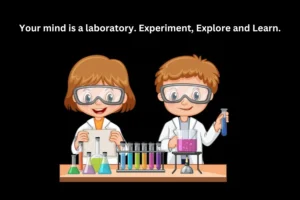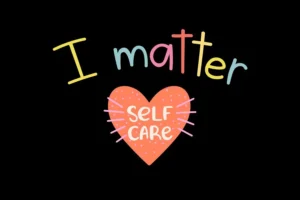A pillar of developmental psychology, Bowlby’s attachment theory offers deep insights into the nature of interpersonal relationships and emotional growth. Fundamentally, this idea highlights how early attachment experiences have a significant impact on how people develop socially, emotionally, and cognitively over the course of their lives.
According to Bowlby’s attachment theory, babies have an innate need to bond with their caretakers to survive and feel safe. Early attachments provide a haven from which people can explore the outside world and grow in confidence, self-worth, and security. Bowlby’s theory transformed our knowledge of human behavior by emphasizing the role that emotional attachments play in determining how people react to stress, control their emotions, and build close relationships.
Table of Contents
Importance of Understanding Bowlby’s Attachment Theory
Comprehending ainsworth and bowlby attachment theory is crucial for several professions, such as social work, psychology, education, counseling, and parenting. Practitioners and caregivers can promote healthy relationships, resolve attachment-related issues, and better assist children’s emotional development by understanding the fundamentals of attachment theory.
Therapeutic approaches for people dealing with attachment-related problems, such as trauma, bereavement, or relationship problems, are guided by attachment theory in clinical settings. Therapists can assist clients in developing resilience, boosting self-esteem, and improving their interpersonal functioning by addressing underlying attachment patterns and cultivating stable bonds during therapy.
Understanding john bowlby theory can help educators create caring, supporting environments in the classroom that enhance kids’ emotional health and academic performance. Teachers can assist their students’ social-emotional development and address attachment-related issues in the classroom by implementing practices that acknowledge the influence of early attachment experiences on children’s behavior and learning.
Bowlby’s attachment theory is a useful tool for understanding the dynamics of parent-child relationships and the significance of providing sensitive, responsive care. Through an awareness of secure attachment principles and how parenting styles affect their kids’ attachment styles, parents may establish safe, nurturing interactions that foster resilience and healthy growth in their kids.
Understanding Bowlby’s Attachment Theory
What Are The Main Principles of Bowlby’s Attachment Theory?
Several fundamental ideas that clarify the nature of attachment connections and their significance for human development are included in Bowlby and Ainsworth attachment theory. The attachment behavioral system, internal working model, attachment styles, and attachment are some of these ideas.
The term “attachment” describes the strong emotional connection that develops between a baby and its primary caregiver, usually their mother. The infant receives comfort, security, and protection from this attachment link, which lays the groundwork for exploration, learning, and emotional control.
According to Bowlby and Mary Ainsworth’s further elaboration, attachment styles classify the nature of attachment relationships by observing how newborns behave around their caregivers and during reunions and separations. A sense of comfort and trust in relationships are fostered in infants by their caregivers’ availability and responsiveness, which is a hallmark of secure attachment. Conversely, insecure attachment refers to a range of behavioral tendencies that arise from uneven or insensitive caring, including avoidance, ambivalence, and disorganization.
Individuals’ mental images of others, themselves, and relationships are represented by internal working model, which is influenced by early attachment experiences. These internalized schemas direct people’s interactions and reactions to attachment-related situations in future relationships by influencing their expectations, beliefs, and behaviors.
The actions and methods people take to try to get close to attachment figures when they are in need or experiencing distress are all included in the attachment behavioral system. These adaptive responses—such as sobbing, clinging, or seeking comfort—are meant to elicit caregiving and provide a sense of stability and comfort again.
Theoretical Framework of Bowlby’s Attachment Theory
According to Bowlby’s attachment theory, attachment behavior is an evolutionary strategy that aids in reproduction and survival. In his opinion, children are hardwired to seek out attachment figures—usually their primary caregivers—when they feel threatened or in distress. When a baby feel scared, uneasy, or uncertain, their natural attachment behavior system becomes triggered, making them seek out their caregivers for solace and reassurance.
The idea of the internal working model, which stands for people’s mental representations of others, relationships, and themselves based on early attachment experiences, is fundamental to John Bowlby’s theory. These internalized schemas influence an individual’s attachment patterns and interpersonal dynamics by directing their expectations, convictions, and actions in subsequent relationships.
According to Bowlby’s attachment theory, emotionally stable attachment is linked to favorable developmental outcomes like social competence, emotional resilience, and mental health. On the other hand, insecure attachment brought on by irregular or unresponsive caring can result in attachment-related problems like anxiety, avoidance, or disordered behavior.
Related reading: Mind-Blowing the History of Psychology
Key Figures in Bowlby’s Attachment Theory
How Did John Bowlby Contribute to The Attachment Theory?
John Bowlby’s seminal study revolutionized our knowledge of human interactions and emotional development, laying the groundwork for attachment theory. Through the integration of concepts from developmental psychology, evolutionary biology, psychoanalysis, and ethology, Bowlby developed a comprehensive theory of attachment that highlighted the role that early attachment experiences have in influencing an individual’s development.
Bowlby’s research highlighted the adaptive role of attachment behavior in supporting survival, protection, and emotional security, challenging conventional ideas about infant care and mother bonding. His theoretical works, such as “Attachment and Loss” offered a framework for comprehending the dynamics of attachment bonds and how they affect a person’s growth.
Beyond theoretical publications, Bowlby made empirical contributions to the field of attachment study through his observations of children who were taken away from their primary caregivers and his studies on the impact of institutional care on children’s development. Bowlby illustrated through these studies the significant influence that early attachment experiences have on children’s emotional health and social development.
What Role Does Mary Ainsworth Play in Attachment Research?
John Bowlby’s colleague and developmental psychologist Mary Ainsworth contributed to our understanding of attachment behaviors and patterns with her groundbreaking research and empirical studies. The creation of the “Strange Situation” approach, a structured observational method for evaluating infants’ attachment styles based on their reactions to separations and reunions with their primary caregiver, was Ainsworth’s fundamental contribution to attachment theory.
In the controlled laboratory environment known as the “Strange Situation,” newborns are subjected to a series of brief separations and reunions with their caretakers. Three main forms of attachment were identified by Ainsworth and her colleagues based on their observations of the behaviors of the newborns during these episodes: secure attachment, insecure-avoidant attachment, and insecure-ambivalent attachment.
Babies who are securely attached have a composed, self-assured approach to discovery and, in times of distress, seek solace from their caretakers. Insecure-ambivalent newborns, on the other hand, behave clingingly and anxiously and may reject or resist comfort from their caregivers, whereas insecure-avoidant infants appear indifferent or distant during reunions with their primary caregiver.
Bowlby’s theoretical claims were empirically supported by Ainsworth’s study, which also deepened our understanding of attachment patterns and their developmental consequences. Her categorization scheme for attachment behaviors influenced further studies on attachment dynamics and treatments and offered a framework for evaluating attachment relationships in a variety of cultural contexts.
Developmental Implications of Attachment Patterns
How Does Bowlby’s Attachment Theory Explain Behavior in Children?

Bowlby’s Attachment Theory explain behavior in children in the following ways:
| Secure Attachment | Securely bonded infants perceive their primary caregiver as being accessible and attentive. They are able to properly manage their emotions, form connections, and explore their surroundings as a result. |
| Insecure Attachment | Insecure attachment, resulting from inconsistent or insensitive caring, can give birth to attachment-related problems such as separation anxiety, avoidance, or disorganization. While insecure-ambivalent babies are clingy and nervous, wanting to be near to their caregivers but unsure of whether they would respond, insecure-avoidant newborns learn to suppress their attachment demands and may appear self-sufficient or independent. |
| Impact on Children’s Development | The quality of early attachment relationship has a major impact on children’s cognitive capacities, psychosocial adjustment, and social development. Compared to children with insecure attachment styles, securely connected children generally show higher levels of resilience, empathy, and emotional regulation. |
How Does Bowlby’s Attachment Theory Impact Adult Relationships?

Early childhood attachment relationship patterns frequently continue into adulthood, influencing people’s behaviors in romantic relationships, parenting, and interpersonal interactions. Adults who are securely attached typically enjoy more fulfilling, encouraging romantic relationships that are marked by closeness, trust, and clear communication. Adults who are securely attached are at ease communicating their wants and feelings, asking for and giving help from their partners, and reciprocating that support.
Adults with insecure attachment styles, on the other hand, could find it challenging to establish and preserve intimate relationships. While adults with insecure-ambivalent attachment may yearn for closeness but find it difficult to trust others and control their emotions, individuals with anxious-avoidant attachment may shy away from intimacy and emotional closeness out of fear of being rejected or vulnerable. Adult attachment-related issues can show themselves in a variety of contexts, such as romantic partnerships, friendships, and professional contacts.
Studies indicate that a blend of genetic, environmental, and interpersonal factors impacts the persistence of attachment relationship throughout adulthood. People’s expectations, beliefs, and behaviors in close relationships and social interactions are shaped by their early attachment experiences, which serve as a model for future relationships. Nonetheless, people can acquire more stable attachment styles via therapeutic interventions, personal development, and social support. Attachment patterns are neither unchangeable nor fixed.
Practical Applications of Bowlby’s Attachment Theory
How Does Attachment Parenting Relate to Bowlby’s Theory?

The focus of attachment parenting is on providing caring, attentive care that strengthens the connections of secure attachment between parents and children. Attachment parenting, which is based on attachment theory, advises parents to offer a haven for their kids to explore the outside world, as well as to be aware of their emotional and physical needs.
Breastfeeding, baby-wearing, co-sleeping, and responsive feeding are examples of attachment parenting techniques that help parents and kids develop a close link, emotional sensitivity, and mutual trust. Attachment parenting establishes the groundwork for children’s resilience, self-worth, and good emotional development by encouraging stable attachments early in life.
Proponents of attachment parenting stress the value of developing solid parent-child bonds based on empathy, respect, and trust. Parents may assist their children’s healthy development and foster favorable outcomes throughout their lives by placing a high priority on their emotional well-being and developing solid bonds.
How Does Bowlby’s Attachment Theory Influence Therapy Approaches?

The goal of attachment-theorized treatments is to improve relational health in both people and families by addressing attachment-related problems. To examine and process attachment-related events, feelings, and behavioral patterns, attachment-based therapies make use of the concepts of attachment theory.
Emotionally-focused therapy (EFT) and attachment-focused cognitive-behavioral therapy (CBT) are two examples of attachment-based therapies that offer a compassionate, understanding setting for patients to examine their past experiences with attachment, recognize unhelpful habits, and create more stable attachment styles. These treatments emphasize developing intimacy and trust in relationships, enhancing communication and emotional regulating abilities, and fortifying attachment bonds.
Targeting attachment-related issues in young children and their caregivers, parent-child interaction therapy (PCIT) is an evidence-based intervention. PCIT uses structured play sessions, coaching, and feedback to improve parenting techniques, strengthen parent-child bonds, and foster stable attachments. PCIT can assist families in overcoming attachment-related difficulties and fostering healthy connections, which in turn helps children develop resilience.
Cultural Considerations in Bowlby’s Attachment Theory
Cross-Cultural Perspectives on Attachment Styles
The fundamental principles of human connection are provided by Bowlby’s attachment theory; nevertheless, the expression and perception of attachment behaviors are shaped by cultural circumstances. Cultural sensitivity and knowledge are crucial in attachment research and practice because they impact attachment patterns and relationship dynamics in a variety of cultural contexts. These factors include cultural norms, beliefs, and caregiving practices.
Interdependence, family unity, and group caregiving are valued in collectivist cultures, which include many Asian, African, and Latin American countries. In these cultures, children may get care from a variety of caregivers, including grandparents, relatives living abroad, and members of the community, all of whom help with socialization and emotional growth. Individual autonomy or independence may not be as important to collectivist cultures as community harmony, cooperation, and connection. This may be reflected in attachment patterns.
Individualism is praised in cultures that emphasize autonomy, self-expression, and personal accomplishment, such as in many Western societies. These cultures place a significant emphasis on individual agency, independence, and self-reliance in parent-child relationships. Parents encourage their children to voice their thoughts, follow their objectives, and forge strong identities. In contrast to interdependence or reliance on others for assistance, attachment patterns in individualistic cultures may show a stronger emphasis on self-reliance, personal autonomy, and boundary maintenance.
Debunking Common Misconceptions About Bowlby’s Attachment Theory
To promote proper understanding and use of Bowlby’s attachment theory concepts in research, practice, and daily life, misconceptions about the theory must be dispelled. The idea that attachment patterns are stable or predetermined, that attachment theory holds parents responsible for attachment-related problems, or that attachment styles are the only factors influencing an individual’s relationship outcomes are common fallacies regarding attachment theory.
The dynamic and context-dependent aspect of attachment patterns—which can alter over time in response to shifts in relationships, experiences, and therapeutic interventions—is acknowledged by attachment theory. Even though early attachment events have a big influence on how people attach, these experiences are not predetermined; people can grow as individuals, go to therapy, and form more stable attachment patterns.
Bowlby’s attachment theory also recognizes the influence of interpersonal and contextual factors, including family dynamics, socioeconomic status, and cultural norms, on the development of attachment patterns. Attachment theory aims to comprehend the intricate interplay of genetic, biological, psychological, and social elements that influence people’s attachment experiences and relational outcomes, as opposed to placing the blame for attachment-related issues on parents.
Conclusion
Recap of Bowlby’s Attachment Theory
An extensive framework for comprehending the dynamics of human attachment and its effects on growth, relationships, and well-being is offered by Bowlby’s attachment theory. Bowlby’s attachment theorysheds light on the importance of early caregiving experiences and attachment connections, providing an insightful understanding of the intricacies of interpersonal relationships and emotional intimacy.
According to Bowlby’s attachment theory, attachment behavior has an adaptive purpose in fostering emotional stability, safety, and survival. Early secure attachment formation gives children a foundation of safety, trust, and emotional resilience that impacts their lifelong social, emotional, and cognitive development. This is accomplished by caregivers.
Importance of Applying Bowlby’s Attachment Theory
Applying Bowlby’s attachment theory can improve people’s quality of life, build resilience, and support healthy relationships in a variety of settings, including parenting, education, therapy, and policy-making. People can develop stable attachments, encourage emotional control, and create gratifying, supportive interactions with others by incorporating attachment-informed techniques into both personal and professional contexts.
Encouragement for Further Exploration and Research
To further our understanding of human attachment processes and their implications for individuals, families, and societies, further investigation, study, and collaboration are necessary as attachment theory continues to develop. We may improve our understanding of human connection and the well-being of future generations by embracing openness, curiosity, and a dedication to evidence-based practice.
References
- Bowlby, J. (1969). Attachment and Loss: Vol. 1. Attachment. New York: Basic Books.
- Bowlby, J. (1973). Attachment and Loss: Vol. 2. Separation: Anxiety and Anger. New York: Basic Books.
- Ainsworth, M. D. S., Blehar, M. C., Waters, E., & Wall, S. (1978). Patterns of Attachment: A Psychological Study of the Strange Situation. Hillsdale, NJ: Lawrence Erlbaum Associates.
- Cassidy, J., & Shaver, P. R. (Eds.). (2008). Handbook of Attachment: Theory, Research, and Clinical Applications (2nd ed.). New York: Guilford Press.
- Holmes, J. (1993). John Bowlby and Attachment Theory. New York: Routledge.













